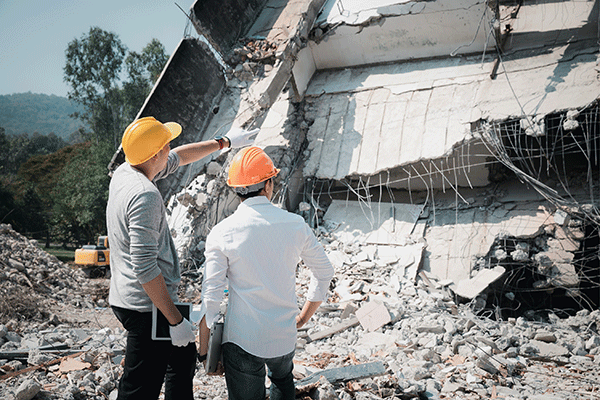‘IN CONVERSATION WITH AN EXPERT’
By Dr Troy Coyle, CEO, HERA
In the latest episode of the Stirring the Pot podcast, Rebecca Symonds spoke to Shahab Ramhormozian, an Associate Professor in Structural and Earthquake Engineering
at Auckland University of Technology, about his research of steel structures and low-damage seismic resistance systems. Shahab received the Innov8 impact award at the 2023 HERA Future Forum Industry Awards.
The work that led to the award stemmed from the MBIE-funded, five-year, $9.47 million Endeavour research project, whose collaborators include HERA, the University of Auckland, and the University of Canterbury, and other industry and academic organisations and figures locally and globally.
Naturally Shahab describes the project as “highly collaborative” work: “It is something of a continuation of what I did in my PhD years ago, on a new generation of seismic resistance systems which, unlike traditional systems, are designed to be low-damage, friction-sliding, or repairable. After a severe earthquake the structure can be ideally in no need to repair, or easily repaired, not closed or demolished. New Zealand is an earthquake-prone country and our recent experience in Christchurch proved the critical importance of low-damage design. “But where the PhD was focused on one type of structural system, in the Endeavour research we expanded that successful concept to a much wider range of buildings and structural systems, with the main aim being to improve and revolutionise the current design procedures to achieve that low-damage system very broadly.
“How it works is that instead of using traditional connectors to connect beams and columns and braces, we use friction sliders. The benefit of that is that during a severe earthquake, the energy is dissipated and the force generated in the structural components is limited,” says Shahab.
“New Zealand is pioneering this area of building design and is at the forefront of innovation in this field. Other countries are doing the research, but to the best of my knowledge we have been the most successful country in implementing these systems in practice. The positive economic impact of not having to demolish and rebuild is huge, and it’s a global trend.
“One of the main goals of this current research is to implement these practices worldwide. A major reason for inviting in our international collaborators is so we can answer all questions with evidence, to create a clear system that is exportable and used globally. We have received interest from China and Italy, where such systems are being tested, and we have a goal to codify this and get these research outcomes into building standards.
“Another objective is to have a system that is future-proof so the building can be finetuned or modified if standards change. The most important thing is that in the event of a more severe earthquake than a building was designed for, there is the capacity to avoid structural damage. That is valuable in any country.”
As a collaborator, HERA is contributing across a range of its core areas of expertise to this research, with the welding team delivering expertise on steel welding and bolted connections, and the Structural Systems team developing design guides, related training, finite element
analysis and PhD supervision to influence and benefit the design and build process of various projects using steel.
Listen to the full podcast episode in conversation with Associate Professor Shahab Ramhormozian at https://www.hera.org.nz/stp-ep104-pioneering-seismic-research-in- aotearoa/.
Dr Troy Coyle brings more than 20 years’ experience in innovation management across a range of industries including materials science, medical radiation physics, biotechnology, sustainable building products, renewable energy and steel. She is a scientist with a PhD (University of NSW) with training in journalism and communications.

